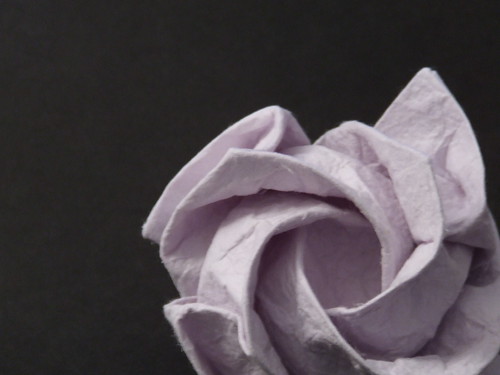 |
| Satoshi Kamiya's Ryujin |
What you see in the picture is what I believe, the pinnacle of modern origami. The complexity of the model is completely beyond the scope of my imagination. It usually takes something around 40 hours for an experienced folder to complete. It has something around 1000 scales, a mustache, a tongue, eyebrows, feet, and everything else that a walking, fire-breathing dragon should come with.
HOWEVER, getting to this point has been a very long road. For the first few THOUSAND years after the invention of origami in Japan, the models rarely had more than 20 steps. Such as this Samurai hat:
Which has 8 steps. So that's pretty much how things stayed until the "father of modern origami", Yoshizawa, entered the picture. He was the the inventor of over 50,000 origami models and really started to actually be expressive with origami, and use it as you would any other medium to express yourself. He also contributed to the art my inventing a technique called wet-folding. While wet-folding, you actually wet the paper while folding it. (yeah crazy, wet-folding is folding wet paper...) Instead of creating a soggy, and torn mound of paper like you may think, when applied correctly, it creates some of the most beautiful origami creations I have ever seen. This technique helps create a very 3d shape which makes any model many times more realistic. ie
 |
| Dryfolded rose |
 |
| Wetfolded rose |
As you can see how much more fluid and realistic the model on the left is compared to the right. BUT, the model on the left was also made with crappy paper and probably not the most experienced folder. Wet-folding still remains the best way to fold curves and form tight points, as in insects, bird beaks, and dragon talons.
After Yoshizowa came several other folders that changed the entire idea of origami. The foremost of these folders was probably Robert Lang. He introduced computers into the mix and created incredibly anatomically accurate models of all sorts of animals and insects. He did this by using programs which he wrote, to calculate the different folds required to create the base of a model. Hence the CP (Crease Pattern) was born. CP's are currently the easiest and most accurate way for folders to share models. Below is Lang's Bull Moose and it's CP.

The other major innovator I would list would probably be Satoshi Kamiya. His method of model creation is unlike any other folder I have even heard of. Satoshi starts by imagining what he wants the model to look like and then unfolds it in his mind!! It is surreal...The catch is he's only 29! His works include the above Ryujin, the Ancient Dragon, the Phoenix, and quite a few other mind boggling creations.
Now of course their were MANY MANY other major contributors to the art, but those are who I consider the most ground shaking.
~V 1.0~
//If you have any topics you would like to see me write about, drop me a comment\\


No comments:
Post a Comment